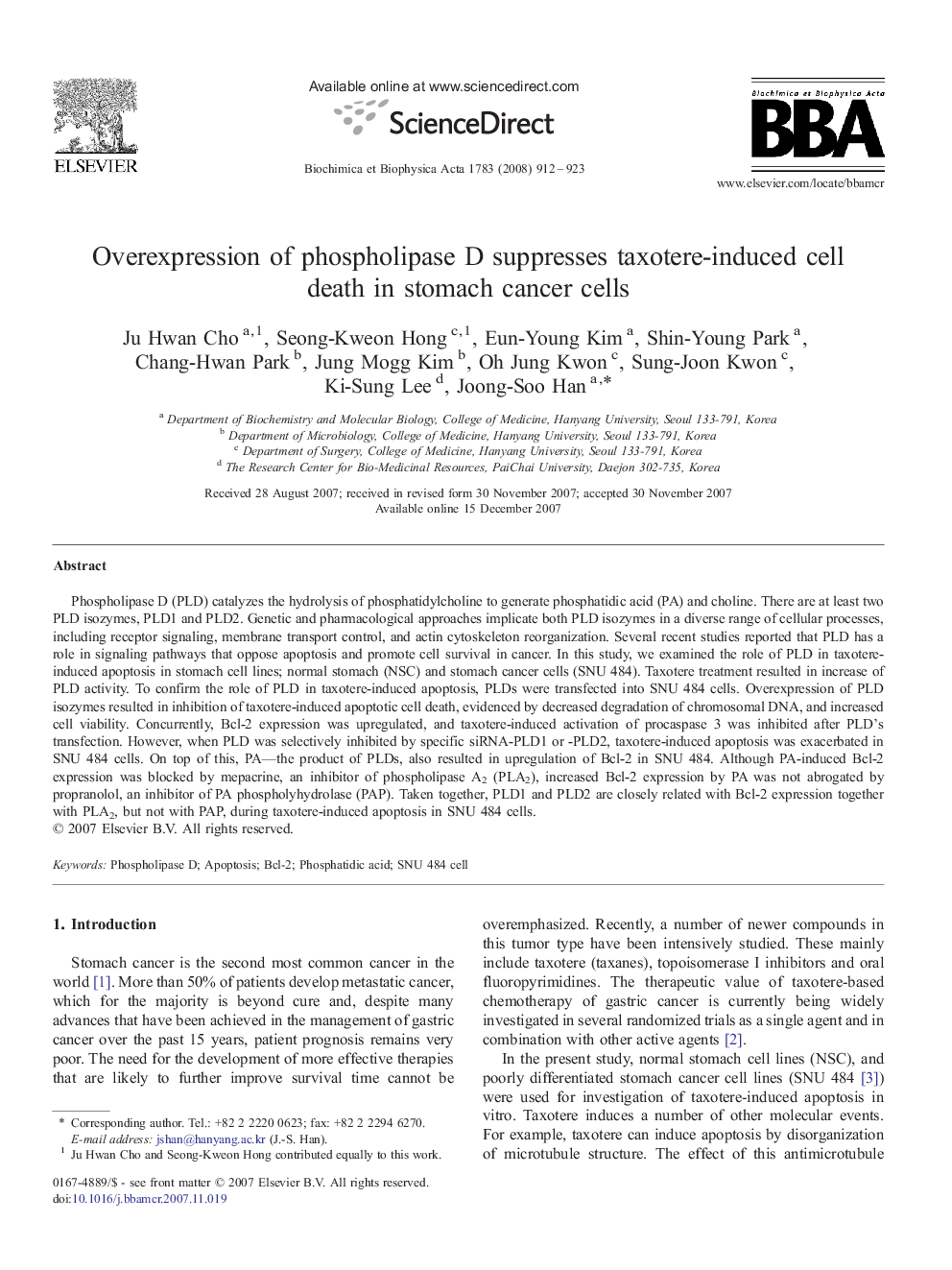| Article ID | Journal | Published Year | Pages | File Type |
|---|---|---|---|---|
| 1951251 | Biochimica et Biophysica Acta (BBA) - Molecular Cell Research | 2008 | 12 Pages |
Phospholipase D (PLD) catalyzes the hydrolysis of phosphatidylcholine to generate phosphatidic acid (PA) and choline. There are at least two PLD isozymes, PLD1 and PLD2. Genetic and pharmacological approaches implicate both PLD isozymes in a diverse range of cellular processes, including receptor signaling, membrane transport control, and actin cytoskeleton reorganization. Several recent studies reported that PLD has a role in signaling pathways that oppose apoptosis and promote cell survival in cancer. In this study, we examined the role of PLD in taxotere-induced apoptosis in stomach cell lines; normal stomach (NSC) and stomach cancer cells (SNU 484). Taxotere treatment resulted in increase of PLD activity. To confirm the role of PLD in taxotere-induced apoptosis, PLDs were transfected into SNU 484 cells. Overexpression of PLD isozymes resulted in inhibition of taxotere-induced apoptotic cell death, evidenced by decreased degradation of chromosomal DNA, and increased cell viability. Concurrently, Bcl-2 expression was upregulated, and taxotere-induced activation of procaspase 3 was inhibited after PLD's transfection. However, when PLD was selectively inhibited by specific siRNA-PLD1 or -PLD2, taxotere-induced apoptosis was exacerbated in SNU 484 cells. On top of this, PA—the product of PLDs, also resulted in upregulation of Bcl-2 in SNU 484. Although PA-induced Bcl-2 expression was blocked by mepacrine, an inhibitor of phospholipase A2 (PLA2), increased Bcl-2 expression by PA was not abrogated by propranolol, an inhibitor of PA phospholyhydrolase (PAP). Taken together, PLD1 and PLD2 are closely related with Bcl-2 expression together with PLA2, but not with PAP, during taxotere-induced apoptosis in SNU 484 cells.
